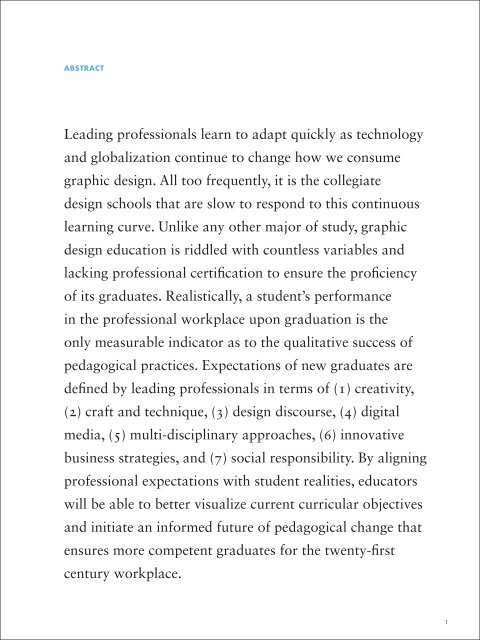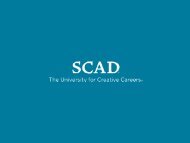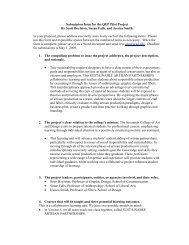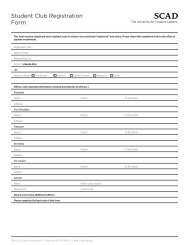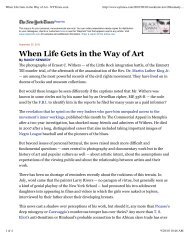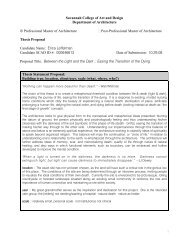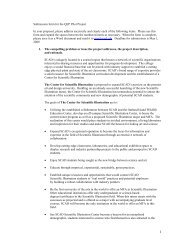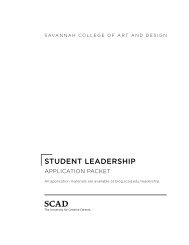Nicole Roberts MFA Thesis Visual Component Artwork - Savannah ...
Nicole Roberts MFA Thesis Visual Component Artwork - Savannah ...
Nicole Roberts MFA Thesis Visual Component Artwork - Savannah ...
You also want an ePaper? Increase the reach of your titles
YUMPU automatically turns print PDFs into web optimized ePapers that Google loves.
abstract<br />
Leading professionals learn to adapt quickly as technology<br />
and globalization continue to change how we consume<br />
graphic design. All too frequently, it is the collegiate<br />
design schools that are slow to respond to this continuous<br />
learning curve. Unlike any other major of study, graphic<br />
design education is riddled with countless variables and<br />
lacking professional certification to ensure the proficiency<br />
of its graduates. Realistically, a student’s performance<br />
in the professional workplace upon graduation is the<br />
only measurable indicator as to the qualitative success of<br />
pedagogical practices. Expectations of new graduates are<br />
defined by leading professionals in terms of (1) creativity,<br />
(2) craft and technique, (3) design discourse, (4) digital<br />
media, (5) multi-disciplinary approaches, (6) innovative<br />
business strategies, and (7) social responsibility. By aligning<br />
professional expectations with student realities, educators<br />
will be able to better visualize current curricular objectives<br />
and initiate an informed future of pedagogical change that<br />
ensures more competent graduates for the twenty-first<br />
century workplace.<br />
1


